“Early childhood is often described as a unique and critical time for connecting children with nature.”
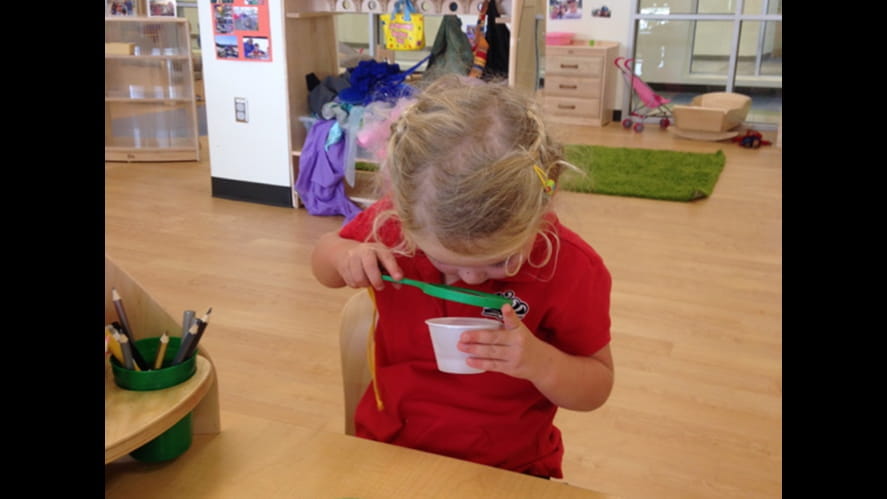
“Early childhood is often described as a unique and critical time for connecting children with nature.”
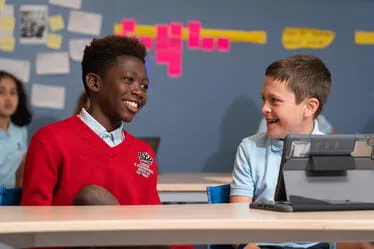
“Early childhood is often described as a unique and critical time for connecting children with nature.”
Since the start of the year the children have shown a desire to help care for the classroom plants. Initially the interest stemmed from the children’s desire to fill the watering can and transport the water across the classroom. The tipping action of the watering can and the flow of the water also brought delight. There was surprise when the water overflowed, bringing with it soil and plant debris, thus leaving traces on the floor.
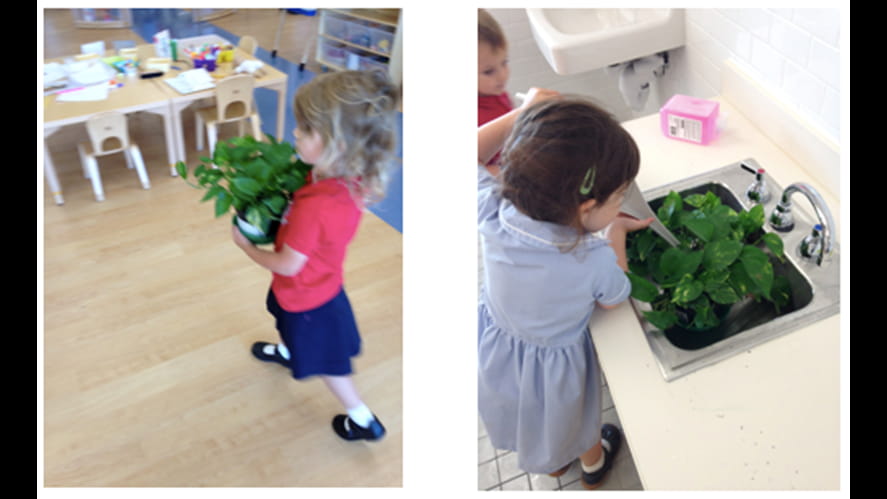
As the weeks passed and the children continued in their care of the plants, they began to notice and observe how the plants were changing.
“The leaves are drying,” said Holly, as she picked up some of the brown leaves, which were lying limp at the bottom of the plant. “Too much water,” she observed, as she looked at the bowl and noticed that the plant was sitting in an inch of water.
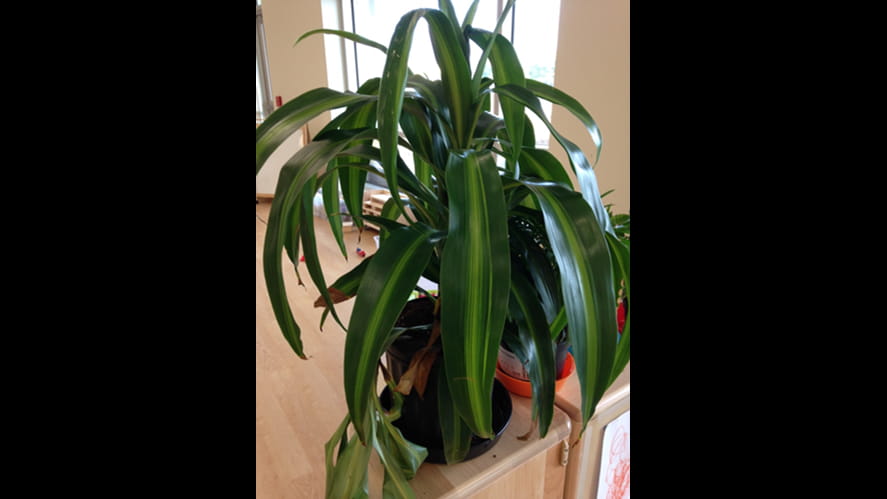
The children were presented with two different types of seed: a tiny black seed (Rosemary) and a slightly larger brown seed (Sage). They were curious about what these small objects were and as they talked together, in an atmosphere of curiosity, respect and collaboration, many different ideas were shared.
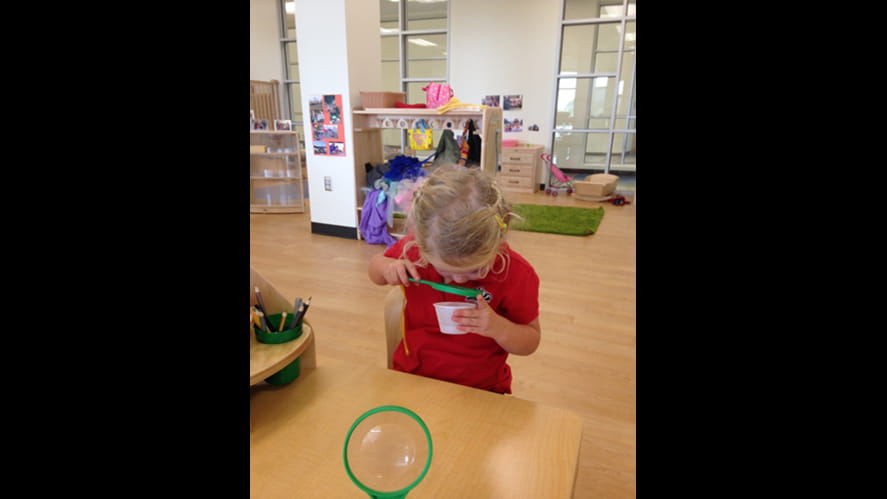
“Interesting.” Ruaridh
“For the bugs. I think it’s food for the bugs.” Dexter
“Seeds because seeds are so small. Shall we grow them?” Holly
“It’s big ones, it’s big ones when I do this! It’s not seeds, I think they’re beads. I think they will turn in to a swimming pool!”Juliette
“Ice cream seeds!” Olivia
The conversation deepened as the children then began to consider what these objects might turn in to. Other children, curious as to what causing such excitement, came over to investigate and share their ideas.
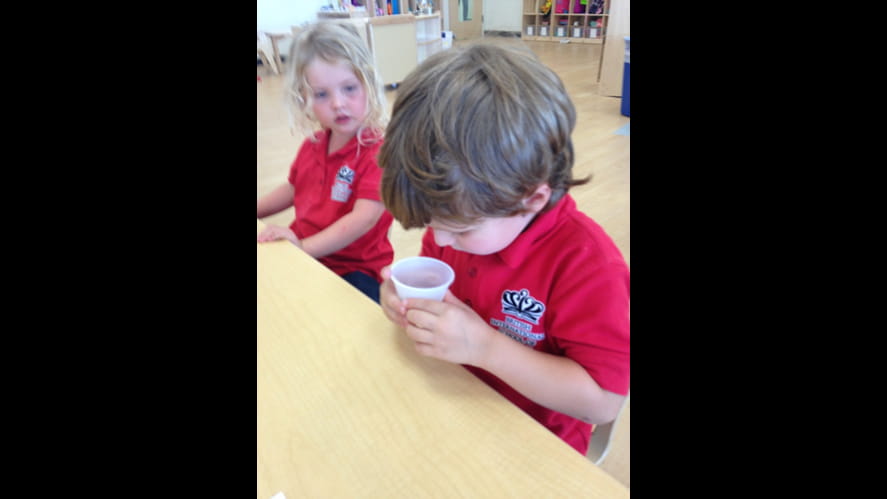
“I think it’s going to turn in to a beanstalk flower.” Freya M
“Going to grow to a blue flower.” Noah
“I think they are going to turn in to a flower. Pink!” Isabella
“Ice cream!” Olivia
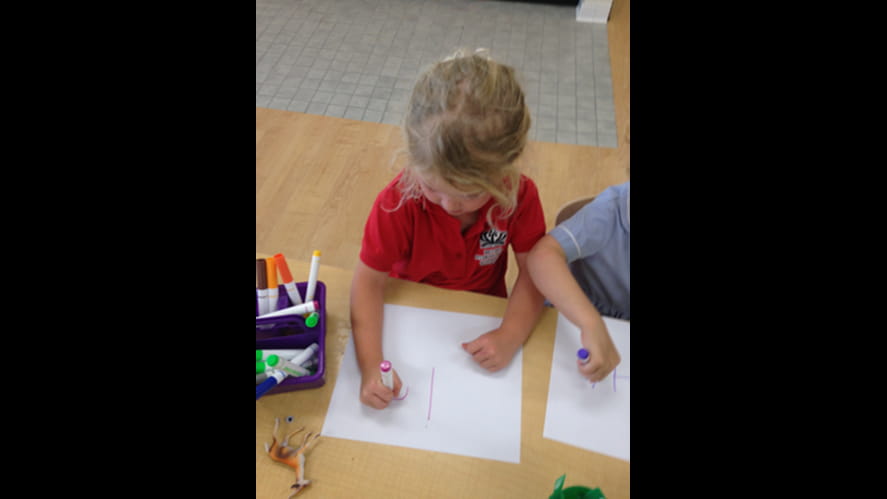
The children were asked to draw their ideas. Drawing is a way to clarify their thinking and share their ideas with others.
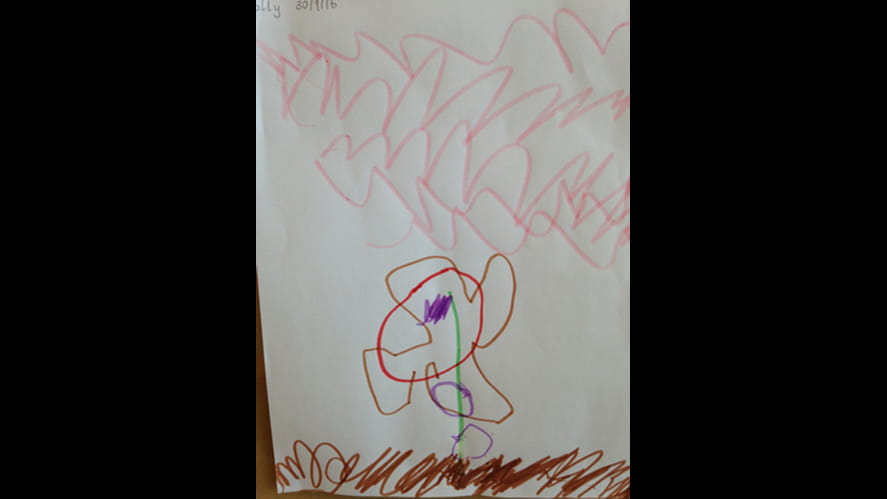
“These are the petals and that’s the green stalk and that’s the mud. These are where the bees go on. The bees will love it. I have to draw one more thing, just a dot. That’s where the bee’s food would be. This is the pink sky. These are the petals. There are different types. Have you ever seen a sunflower like this before?” Holly
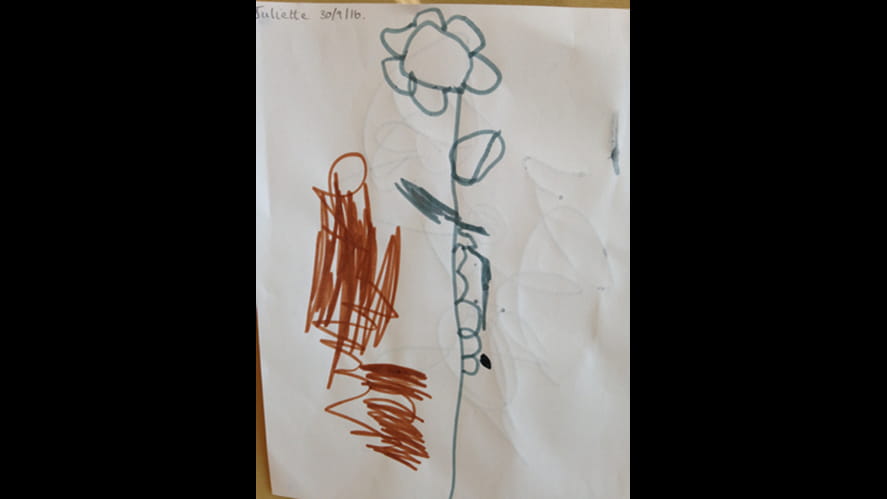
“My seed will grow in to a beanstalk. The beanstalk is going to have one of these sky colours. Mrs Scott lets finish talking about it. This is the bottom of the boat. This is where the house is. This is where the tent is. This is where the engine starts.” Juliette
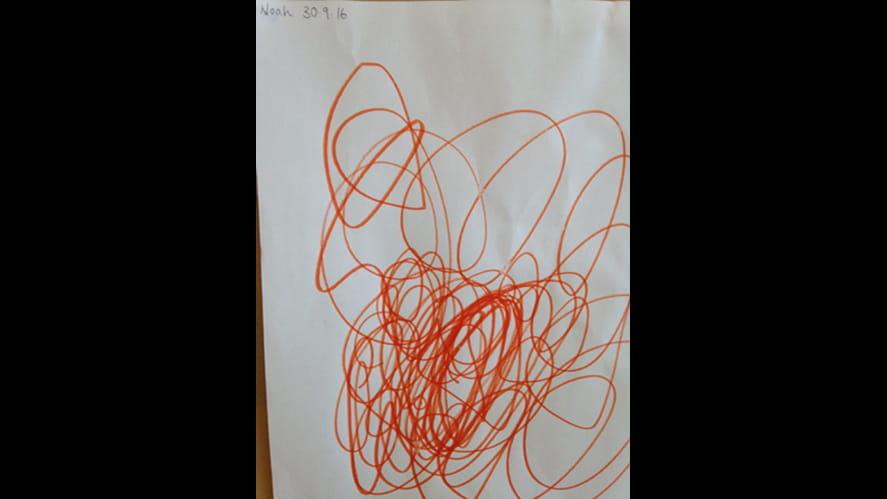
"A rollercoaster, there is wheels. I'm scribbling in a rollercoaster." Noah
So the children planted their own seeds and began to consider where would be a suitable place to leave their plant pot. They explored their environment, protectively cradling their plant pots in their arms. It was interesting to watch how the children carefully observed one another before making their final decision as to where to leave their plant pot.
Aseel was the first to identify where she would like to leave her plant pot, choosing to put it on the floor next to the door, leading to the outdoor learning environment. Holly observed where Aseel placed her plant pot but chose to place hers in a different area; on the windowsill. Juliette and Olivia placed theirs on the windowsill, next to Holly’s.
Aseel picked up her plant pot and held it in her arms. Slowly, the other children began to move towards the windowsill and one by one they placed them on the ledge. Aseel began to move towards the other children. She placed her plant pot on the windowsill next to the others. All of this took place with no verbal communication. The children came to a shared understanding that this was the best place to leave their plants.
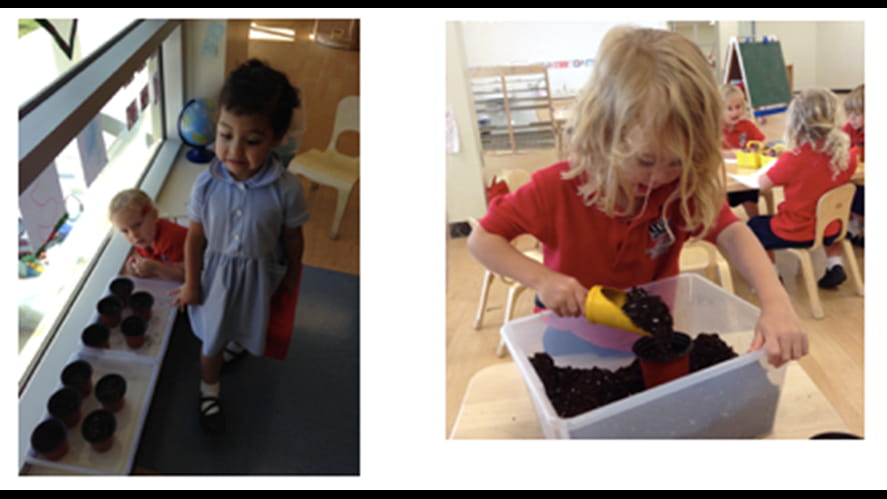
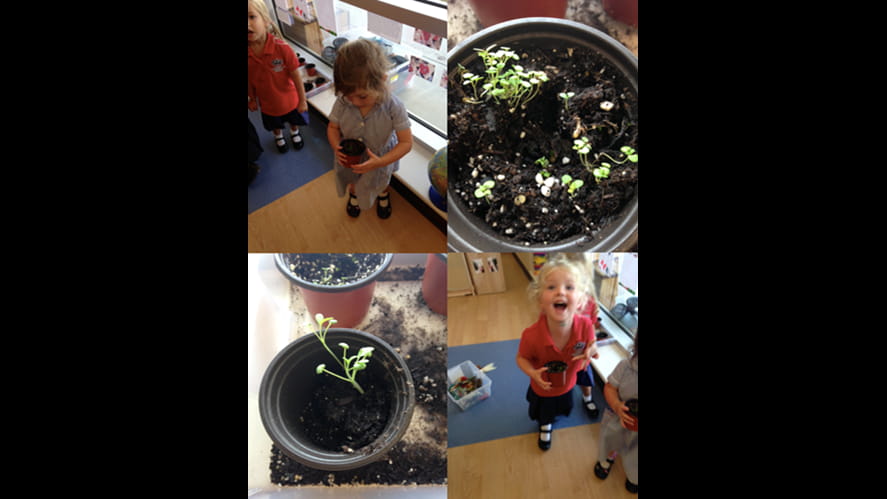
One morning, almost a week after planting the seeds, the children discovered that they had started to grow.
“They’re growing! Baby plants are growing!” Olivia
“The seeds growing and growing really big!” Dexter
“Mrs Scott they’re growing!” Juliette
“They’re growing.” Lara
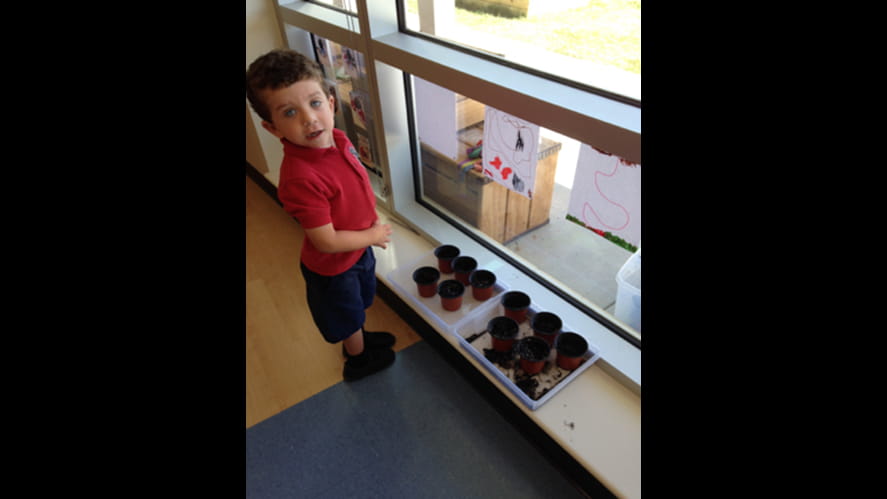
The children displayed a high level of interest and would re-visit the plants throughout the day to check on them and to give them more water.
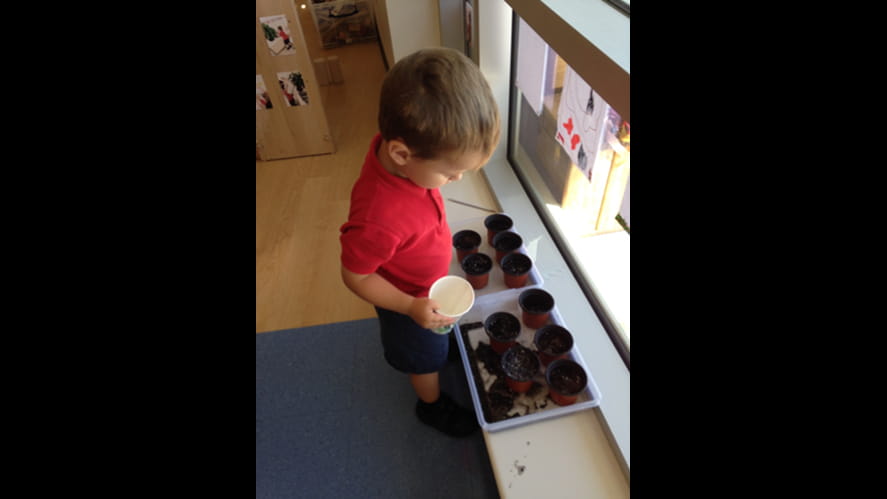
Interestingly, two of the plant pots remained empty with no seeds sprouting from them. The children were asked to consider why they were not growing.
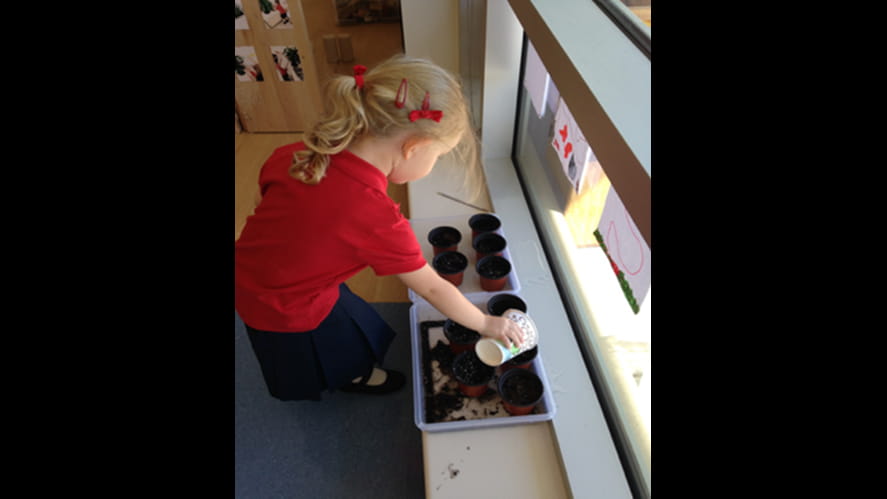
“We need to grow things. They need water so they can grow. Little bit of water in each pot.” Freya
“They need a very big drink of water.” Holly
“They will need lots of water.” Olivia
“They were so thirsty. They will grow.” Juliette
All of the children shared similar ideas and attributed the lack of growth to a lack of water. Through observing, listening to and respecting other opinions and ideas, the children came to a shared understanding that a living thing, in order to survive, needs water.
Learning Journey: Learning to Understand our Scientific and Technological World | ||
Enduring Understanding: All living things go through a process of change.
| Compelling questions: How does it change? What do living things need to grow? What makes it grow? What is our responsibility? What do living things have in common? Why did this happen? | Concepts: Survival, transformation, change, responsibility |